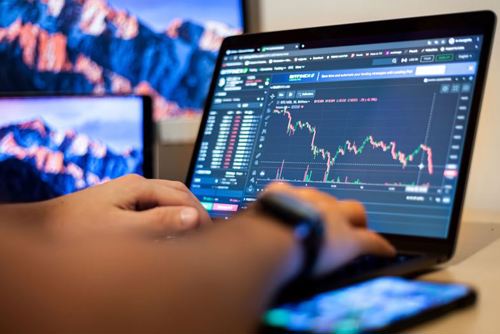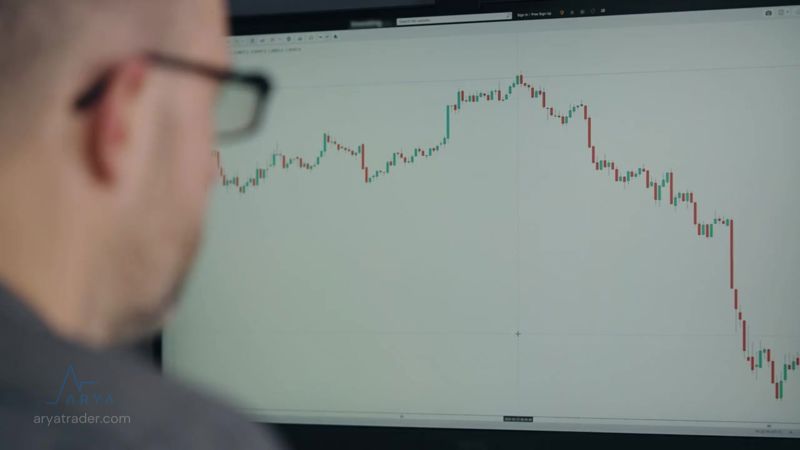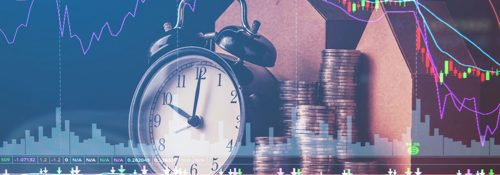
Blog
Investment Psychology — What is the right time for trading?
Money… the most precious asset of humankind for centuries. It’s the essential purpose of people today to have what will keep our lives going. Here we are today, with information that will help protect your money. We are drawing attention to the most critical problems of investors!
The external factors that affect our decisions are significant regarding our investments because the emotions that make the decisions and the ups and downs of the market can deceive us about the timing of buying and selling. Most of the time, investors say that- especially those with low financial literacy- he made a during the purchase-selling of the meta he invested in, or he was in a hurry.
At this point, the investor who enters a spiral loop finds himself in a new timing error in the metal where he reacquisitions. This article shows how to find the right timing for your investments together.

In recent years, there has been much more on this topic in financial meetings held online and face-to-face. Because investors are not meant to be adversely affected by fluctuations in financial markets and speculative news, the investor impacted by the market’s ups and downs will have a significant negative impact, both with the other investors. In this respect, we will describe concepts such as investment psychology or behavioral finance in this training article that led investors to be more careful, more accurate, and have minimal loss with a maximum profit policy…
We will also look at the psychological situations you must avoid, which will enable you to invest successfully when you talk about them…
Yes! So, let’s take a closer look at the origins of these concepts…
With the development of psychology and sociology, people’s investment decisions are also in the lens; experts have noticed our mistakes in making decisions in this area and in all areas of life. Because the impact of emotions on the human brain’s working system is very determinant and risky. The actions of these decisions will also protect or risk our investments to that extent…
The first approach from the behavioral finance theory we will take from this research is the Prospect Theory. In this theory, the main argument reflects that:
• Cognitive conflict disrupts rationality, and emotions prevent rational thinking.
At first glance, this definition that sounds strange is what many investors are aware of. For example, when the price of methane that an investor receives from $10 is reduced to 9–8–7–6–5…, it creates cognitive dissonance by being stubborn with the market instead of exiting the position with stop-loss.
So, in any case, we can make irrational decisions and risk our investments when we act with emotions, as homo economicus, which we think is rational. Of course, it’s not easy to manage these emotions. It’s so impossible in some cases. And that’s where you’ll find out what to do when you get to the end of our article.
But first, let’s take a closer look at the factors that trigger these emotions…
1. Overconfidence: The investor thinks he has a dominant position in the market, knows the concepts very well, and has sufficient experience with transactions. Or vice versa. The investor is not always ready and is experiencing a delay in buying and selling timid investment moves. As wrong as it is to see itself as a lion when it is a cat, it is just as wrong t ignore your potential.
2. Overoptimistic or Illusion of Control or Knowledge: The investor believes his actions will be like previous successes and moves away from market dynamics, relying on his knowledge. This psychological factor is associated with the excessive trust issue, the investor may make irrational decisions because they are over-optimistic about themselves and the market. That’s how he could misjudge his knowledge.
3. Excessive Pessimism: This starts with the investor’s inability to rely on himself due to successive mistakes. The investor is constantly in a state of anxiety and panic about this idea which is linked to the problem of overconfidence. He associates the economic and political difficulties that your country and the world experience with the future of markets. In this case, the investor is highly timid and makes terrible decisions in the trading process. These decisions are damaged by problems such as not making sales or not being sure of anything to profit from.
4. Self-attribution bias: Taking credit for positive results in investment expectations and blaming the market for adverse outcomes. In this case, the investor who cannot analyze the market dynamics well thinks that he and other small investors are constantly conspiring. So much so that some investors believe that counter moves are made by monitoring the transactions by stock exchange platforms. But in his successes, he thinks it is his knowledge and experience and recreates the overconfidence problem.
5. Confirmation bias: It is a way that investors develop as a result of predicting the outcome after the event. In this case, investors get away from rationality in their future transactions under the misconception that they will understand the market dynamics with their intuition. He immerses himself in high-risk transactions, believing that he can only interpret the act of investing with the foresight of this highly multidisciplinary business.

6. Suspicion of economic analysts and analytics institutions: It starts with distrust of individuals and institutions working on investment markets who analyze content. The investor thinks he’s being tricked. In this case, instead of professionals, he acts with the rumors of amateurs and risks his investments. This idea, which coincides with the idea of extreme insecurity, leads the investor to move forward with high-risk or timid transactions. This problem results in the investor making major mistakes along with conspiracy theories.
7. The pursuit of excitement or excitement in the investment process: Investors use investment markets for excitement, just like gambling. Earnings are carried out through extremely risky transactions in this non-investment approach. This brings about the inevitable loss. In addition, the adrenaline of investments in sudden drops and exits also causes that person to lose rationality by thinking emotionally. Whatever the speed of action, it is essential not to lose rational thinking.
8. Cognitive dissonance: It has taken this name because of the contradiction of the decisions and practices in the trading transactions of the investors. It arises from conflicting with market dynamics, such as selling a commodity that is increasing in value or not selling when it is falling. The investor does not accept his mistake and breaks from rationality by relying on his sensory knowledge. Persistence in making mistakes is basic and common. The difference between this overconfidence and mistrust in the market is that the investor is aware of the situation but persists in his will to continue with a stubborn view.
9. Conservatism bias: This is also known as the Status quo trap. It’s because investors are indifferent to the rumors and news on the market. As a result of this situation, the investor who does not change the investment instrument, that is, does not buy or sell, encounters negative consequences because he does not react to the news. Confidence in a commodity such as a dollar, a stock, or digital currency allows it to move away from market dynamics.
10. Bandwagon Effect: Apart from the sensory misconceptions I have mentioned, another very common situation is to act with herd psychology. The investor enters the trade because other investors buy in that direction or vice versa, selling with the news that a commodity will gain value. In this very common situation, investors tend to make decisions far from rationality, especially by acting together with people who do not have high financial literacy. It is essential to listen to the news in the market and to act with herd psychology.
People generally move away from rationality in the extreme aspects of all emotions. However, being ambitious, timid, and overly brave poses a risk to your investments and creates risks in situations such as fear, panic, and happiness. Here are what needs to be done in order to eliminate these emotions, which are more difficult to control, while managing them.
If we summarize them as items.
1. Do not be indifferent to the Financial Markets,
2. Do not be afraid of consultants and intermediary institutions,
3. Don’t stay away from and using technological developments (artificial intelligence robots, etc.),
4. Don’t believe in speculative news and gossip on social media,
5. It is necessary to accept that profit and loss situations are typical and try to stay calm.
This article summarizes what you, our valued investors, must do under a few headings. We can say that these substances must be applied, but human beings are not creatures that can manage their emotions. Because the decision-making mechanisms in the human brain have developed in the system of working with emotions. In addition, as a socializing creature, it is inevitably affected by other people with whom it interacts.
This is exactly why he needs to find a method free from emotions and get support so that he can make rational decisions in every situation.
While examining cognitive finance or investment psychology in our training article, we learned that the most critical mistake that the theorists positioned at the center of this subject is making decisions with emotions!

In this case, the alternative to making decisions with emotions that put your investments at risk is also included in technological developments. Machines that do not make emotional decisions, combined with the power of artificial intelligence, can follow tens of times the process of the human mind.
Since Arya Robots are unique systems free from emotions, they have been developed in such a way that they can make rational decisions by transferring their knowledge and experience from generation to generation.
Evaluating tens of thousands of possibilities per second, Arya Robots has been developed for you to manage your investment portfolios easily. Visit the AryaTrader.com website to review our products to have this experience that offers the technology of the future to minimize risk and grow your investments.
Watch our video for detailed explanation!


